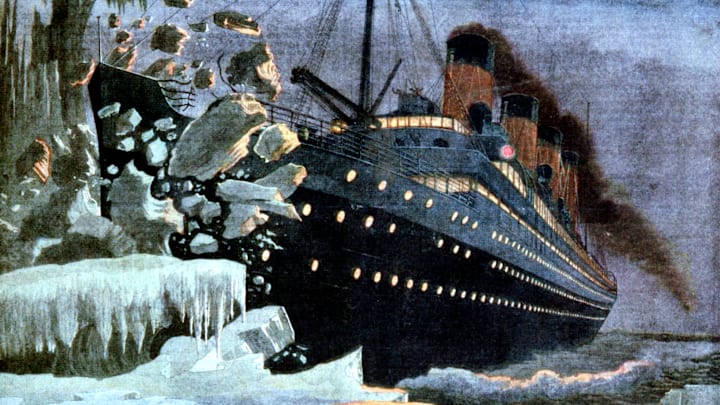Forty years ago, a crew of American and French researchers led by oceanographer Robert Ballard reported some astonishing news: 73 years after hitting an iceberg, the wreck of the RMS Titanic had been found in the North Atlantic Ocean.
Almost immediately, questions regarding who had the right to dive to depths of over 12,000 feet and retrieve artifacts—or even the ship itself—were the subject of public, ethical, and legal debate. Could anyone actually own the remains of the most infamous ocean liner in history?
The ship’s original owner, White Star Line, had evaporated, bought out by rival Cunard; insurance companies covering both the ship and freight had an unknown number of underwriters. The paper trail was so pockmarked by the time of the 1985 discovery that it would’ve been difficult for any one of them to make any substantial claim. And even if they could, the challenge was making a case that would supersede admiralty law, which specifies that a sunken vessel located in international waters belongs to no one.
“Any financial records and the actual certificates of insurance are now lost,” said Paul Louden-Brown, a maritime historian and a former vice president of the Titanic Historical Society. “It would be expensive to pursue a legal claim ... particularly through the U.S. court system and any positive financial outcome is questionable.”
Naturally, not everyone agreed with that assessment.
A Deep Dive into Salvage Rights
In the 1980s and 1990s, several entities challenged the newly formed RMS Titanic, Inc., which had been recognized in court as being the salvor-in-possession after a 1987 dive in tandem with the French research team that had helped Ballard. (It didn’t give them ownership of the ship itself, but they had exclusive American rights to any artifacts retrieved during a dive.) A company named Marex said the ship had been abandoned by RMS Titanic, Inc. (previously known as Titanic Ventures) because it had waited too long to return; another company fought to charge “tourists” $32,500 to visit the wreck in a submersible; insurer Liverpool and London, who had paid out on some passenger policies, pursued the company in court before settling.
It took years, but RMS Titanic, Inc. successfully fought off their remaining challengers and recovered thousands of items during dives performed from 1987 to 2004. Bags that had been recovered were opened by Telly Savalas during a live television special. (They contained some coins, jewelry, and Italian lire.) In 1998, RMS Titanic, Inc. was able to successfully raise a portion of the ship’s hull that weighed 15 tons. For a time, it was part of a Titanic exhibition at the Luxor in Las Vegas.
The company has brought up over 5500 artifacts, with the most recent haul in 2010. In January 2025, RMS Titanic, Inc. put those operations on hold, citing a legal challenge over a 2017 U.S. law prohibiting salvors from retrieving objects due to the wreck’s status as a memorial. Previously, RMS Titanic, Inc. had been required to make efforts to visit the wreck to maintain salvage rights—but that jurisdiction applies only to dives in the United States. “There is nothing to prevent a company based in the UK or any other country from diving and recovering material from the vessel,” Louden-Brown said. “If the items recovered were landed in a U.S. port, then they would be seized and possibly the diving vessel impounded. So any operations would have to begin and end in a country other than the U.S.”
So who owns the Titanic itself? Right now, no one. If someone figured out a way to raise the 66,000-ton ship without destroying what remains, they’d likely be able to claim it—until the inevitable legal challenges came their way. Personal effects and other items are yours for the taking providing you dive for them without entering the U.S. and don’t mind some harsh criticism.
When Ballard returned to the site in 1986, his expedition placed a plaque on the ship’s stern to honor the dead. Like most everything else, it was eventually removed.
Read More Stories About Famous Shipwrecks:
A version of this story was published in 2016; it has been updated for 2025.
